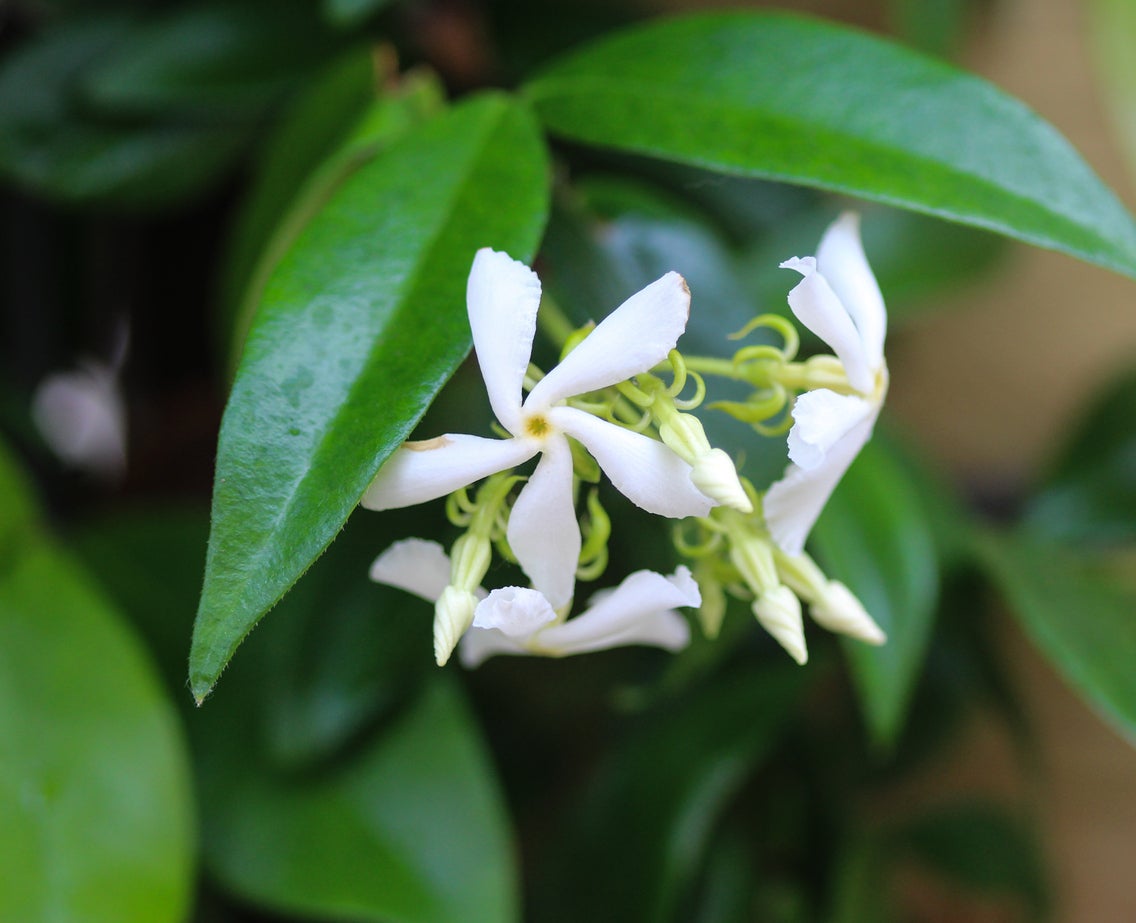Star Jasmine As Ground Cover: Information About Star Jasmine Plants


Also called Confederate jasmine, star jasmine (Trachelospermum jasminoides) is a vine that produces highly fragrant, white blossoms that attract bees. Native to China and Japan, it does very well in California and the southern U.S., where it provides excellent ground cover and climbing decoration. Keep reading to learn about growing star jasmine vine in your garden.
Growing Star Jasmine Vine
Gardeners in warm climates (USDA Zones 8-10) can grow star jasmine as ground cover, where it will overwinter. This is ideal, as star jasmine can be slow to grow at first and may take some time to get established. Once mature, it will reach a height and spread of 3 to 6 feet (1-2 m.).
Prune any upward reaching shoots to maintain an even height. In addition to ground cover, star jasmine plants climb well and can be trained to grow on trellises, doorways, and posts to make for beautiful, fragrant decorations.
In areas any cooler than Zone 8, you should plant your star jasmine in a pot that can be brought inside during the colder months, or treat it as an annual. Once it gets going, it will bloom most in the spring, with more sporadic blooming throughout the summer. The blossoms are pure white, pinwheel shaped, and beautifully perfumed.
How and When To Plant Star Jasmine in the Garden
Star jasmine care is very minimal. Star jasmine plants will grow in a variety of soils, and though they bloom best in full sun, they do well in partial shade and will even tolerate heavy shade.
Space your star jasmine plants five feet (1.5 m.) apart if you’re using them as ground cover. Star jasmine can be planted at any time, usually as cuttings propagated from another plant. It’s disease and pest hardy, though you may see trouble from Japanese beetles, scales, and sooty mold.
Gardening tips, videos, info and more delivered right to your inbox!
Sign up for the Gardening Know How newsletter today and receive a free copy of our e-book "How to Grow Delicious Tomatoes".

The only child of a horticulturist and an English teacher, Liz Baessler was destined to become a gardening editor. She has been with Gardening Know how since 2015, and a Senior Editor since 2020. She holds a BA in English from Brandeis University and an MA in English from the University of Geneva, Switzerland. After years of gardening in containers and community garden plots, she finally has a backyard of her own, which she is systematically filling with vegetables and flowers.
-
 4 Superfast Composting Methods: Turn Waste Into Garden Gold In 30 Days Or Less
4 Superfast Composting Methods: Turn Waste Into Garden Gold In 30 Days Or LessTry the fastest composting methods to turbocharge your pile and transform kitchen scraps and garden waste into finished compost in just a few weeks.
By Mary Ellen Ellis
-
 Best Spider Plant Soil – Complete Soil Guide And Expert Tips For Keeping Plants Happy
Best Spider Plant Soil – Complete Soil Guide And Expert Tips For Keeping Plants HappySpider plants are fun and easy plants to grow, but what is the best soil for a spider plant? Selecting the right soil is important so they can thrive.
By Bonnie L. Grant